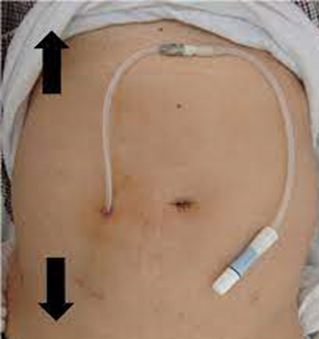A nurse enters a client's room and sees smoke coming from the bathroom. Which of the following actions should the nurse take first?
Use a fire extinguisher at the source of the smoke.
Close the doors to the room and to the bathroom.
Activate the fire alarm system.
Assist the client to a nearby common area.
The Correct Answer is D
Choice A Reason:
Using a fire extinguisher at the source of the smoke is not appropriate. While using a fire extinguisher could potentially help contain a small fire, it's crucial to prioritize rescuing those in immediate danger and alerting others about the fire first by activating the fire alarm. This action ensures that help is on the way and that everyone is aware of the emergency.
Choice B Reason:
Closing the doors to the room and to the bathroom is not appropriate. Closing doors can help contain smoke and fire to some extent, but again, the priority in an emergency situation like this is to rescue those in immediate danger then activate the fire alarm to ensure a swift response and alert others.
Choice C Reason:
Activate the fire alarm system is appropriate. Activating the fire alarm alerts others in the facility and initiates the emergency response protocol, helping to ensure that help is on the way while potentially preventing the spread of fire. However, this step should be taken after assisting the client to safety as they are in immediate danger.
Choice D Reason:
Assisting the client who is in immediate danger to a nearby common area should be the furst step that the nurse takes before alerting other people of the fire. (RACE protocol)
Nursing Test Bank
Naxlex Comprehensive Predictor Exams
Related Questions
Correct Answer is A
Explanation
Choice A Reason;
"You should consume small, frequent meals each day." This statement is advisable for COPD management. Eating smaller, more frequent meals can help prevent bloating or feeling overly full, which might interfere with breathing due to increased pressure on the diaphragm.
Choice B Reason:
"You should decrease your caloric intake by 200 calories per day." While maintaining a healthy weight is important for COPD management, reducing caloric intake without specific guidance or assessment might not be suitable. It's crucial to consult with a healthcare provider or dietitian for individualized dietary recommendations.
Choice C Reason:
"You should increase your oxygen to 5 liters per minute if you have shortness of breath." Adjusting oxygen flow should be done based on a healthcare provider's prescribed guidelines. Self-adjustment of oxygen flow without medical advice can be risky and might not address the underlying cause of shortness of breath during a COPD exacerbation.
Choice D Reason:
"You should discontinue your prednisone when your symptoms improve." Prednisone or other corticosteroids are often prescribed during a COPD exacerbation to reduce inflammation in the airways. However, discontinuing corticosteroids abruptly without a healthcare provider's guidance can lead to a recurrence of symptoms or potential complications. It's important to follow the prescribed regimen and complete the course as directed.
Correct Answer is C
Explanation
Choice A Reason:
Chill the dialysate prior to infusion. Generally, the dialysate used in peritoneal dialysis is warmed to body temperature before infusion to enhance comfort and prevent abdominal discomfort. Chilling the dialysate can cause discomfort and is not a standard practice in peritoneal dialysis.
Choice B Reason:
Monitor the client for diarrhea. While gastrointestinal symptoms might occur in some individuals undergoing peritoneal dialysis due to changes in fluid balance, diarrhea is not a typical or expected outcome. However, monitoring for any unusual gastrointestinal symptoms or changes in bowel habits is part of holistic client care.
Choice C Reason:
Weigh the client before and after the treatment. Weighing the client before and after peritoneal dialysis is a critical step to assess the effectiveness of the treatment. The difference in weight helps determine how much fluid was removed during the dialysis process, providing valuable information about the treatment's efficacy and the client's fluid status.
Choice D Reason:
Use clean gloves when handling dialysate bags. Maintaining aseptic technique during peritoneal dialysis is crucial to prevent infections. The use of clean gloves (not sterile gloves, unless otherwise specified) when handling dialysate bags helps minimize the risk of contamination, ensuring the safety of the procedure.

Whether you are a student looking to ace your exams or a practicing nurse seeking to enhance your expertise , our nursing education contents will empower you with the confidence and competence to make a difference in the lives of patients and become a respected leader in the healthcare field.
Visit Naxlex, invest in your future and unlock endless possibilities with our unparalleled nursing education contents today
Report Wrong Answer on the Current Question
Do you disagree with the answer? If yes, what is your expected answer? Explain.
Kindly be descriptive with the issue you are facing.
